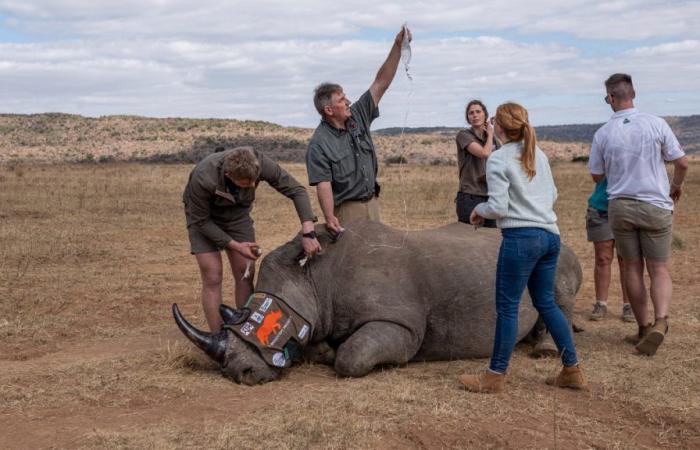Believe it or not, rhino-saving campaigns and measures to make it illegal to trade in rhino horns aren’t stopping poaching. As a Gizmodo article explains, researchers are now banking on radioactivity to cool down traffickers.
The Rhisotope project, led by Professor James Larkin and his colleagues at the University of the Witwatersrand in Johannesburg, South Africa, involves injecting low doses of radioisotopes (i.e. radioactive) into the horns of living rhinoceroses. The goal of the experiment, described in a University of the Witwatersrand press release published on June 25, is to make the radioactive radiation from stolen horns detectable by security equipment, particularly at airports and border posts.
This method has another advantage: it makes the horns unfit for consumption, particularly in Asia where they are highly prized for their so-called therapeutic and aphrodisiac virtues.
Subscribe for free to the korii newsletter!Don’t miss any korii articles thanks to this daily selection, directly in your inbox.
Twenty animals from the Waterberg mountainous region, in the Limpopo province (northeast of South Africa), were the subject of this marking operation, which took place on Tuesday June 25, as also described a report from Agence France-Presse (AFP). A small hole in each horn to introduce a very small quantity of radioisotope is enough to make detectors around the world react without having to deploy a dedicated security device.
While this method helps catch the less clever poachers at airport security gates, it is above all a deterrent. What customer would take the risk of buying a horn that is potentially “marked” and therefore detectable by the authorities? What’s more, who would dare grind it into powder to drink it in a shaker? It is therefore just as important to publicize these measures as it is to implement them.
Radioactive pangolins soon?
According to the charity International Rhino Foundation, 499 rhinos were killed in South Africa in 2023, a figure down 11% from 2022. South Africa alone is home to around 80% of the world’s 16,800 white rhinos and 33% of its 6,500 black rhinos.
“Every twenty hours in South Africa, a rhino dies for its horn. These poached horns are then trafficked around the world and used for traditional medicine or as a status symbol.explains Professor James Larkin. To stem this traffic, only the financial threat of a devaluation of the goods can have an effect.
As part of this experiment, the animals will be closely monitored for six months to ensure that this operation has no influence on their behavior or health. If this trial proves conclusive, this system could be extended to other threatened species, such as elephants or pangolins, but also to flora to fight against deforestation.
Marking as a deterrent is an approach that has proven successful in the past. In the end, we never knew if there really was this product that colored the water in the pool when you secretly peed in it. And we never wanted to do the test. If we can save the rhinos like we saved swimming at the municipal swimming pool, that would be a big step.






